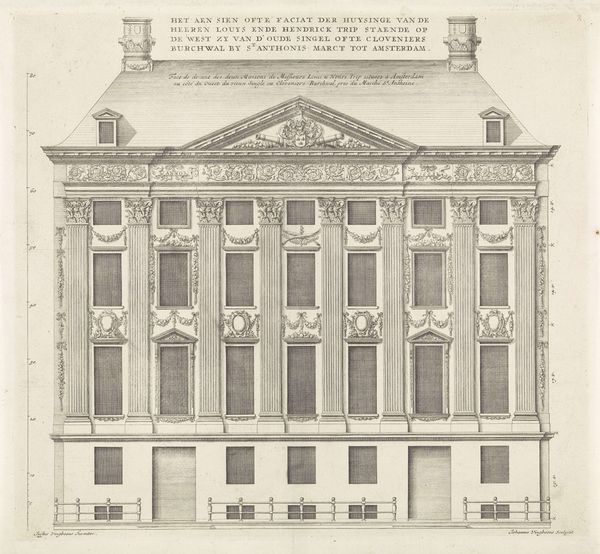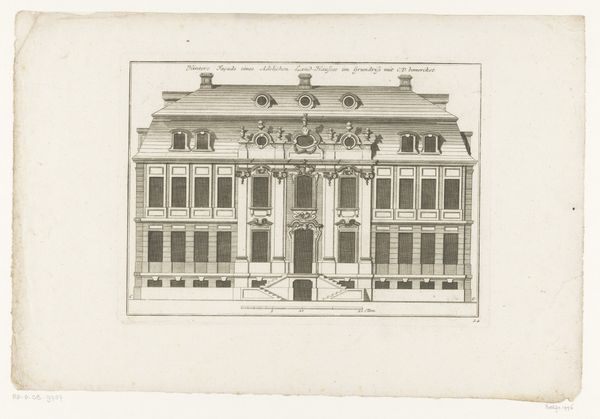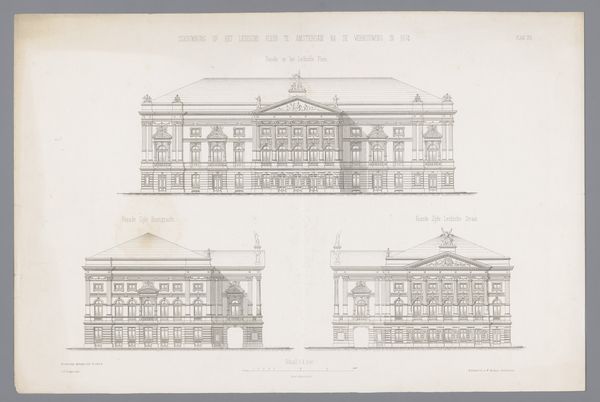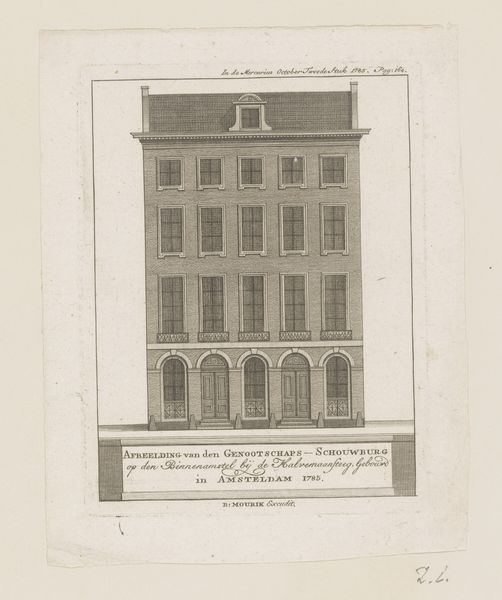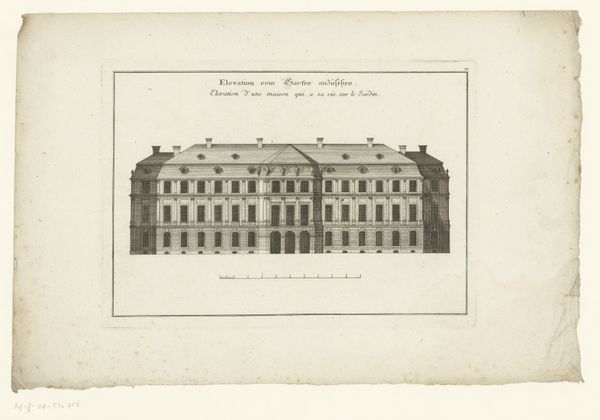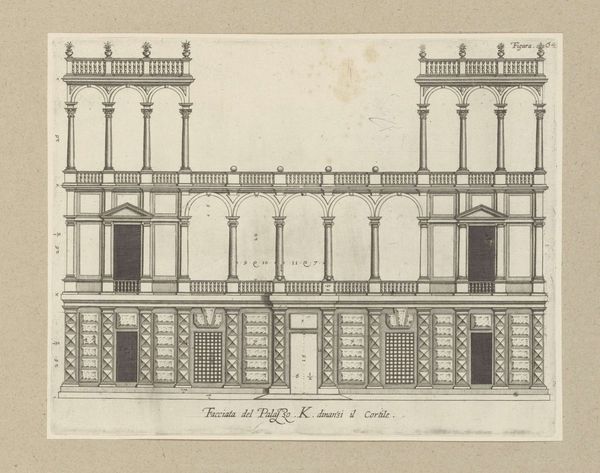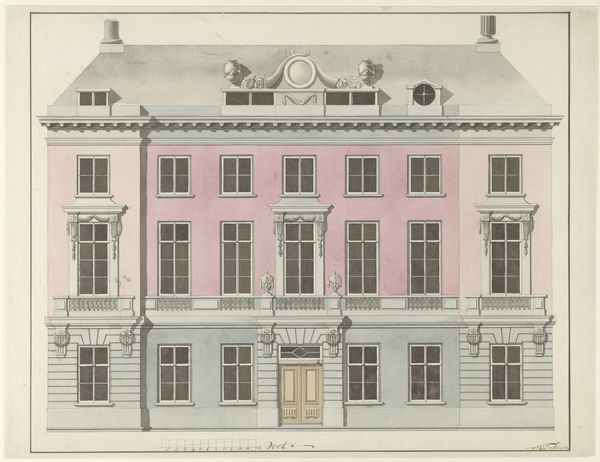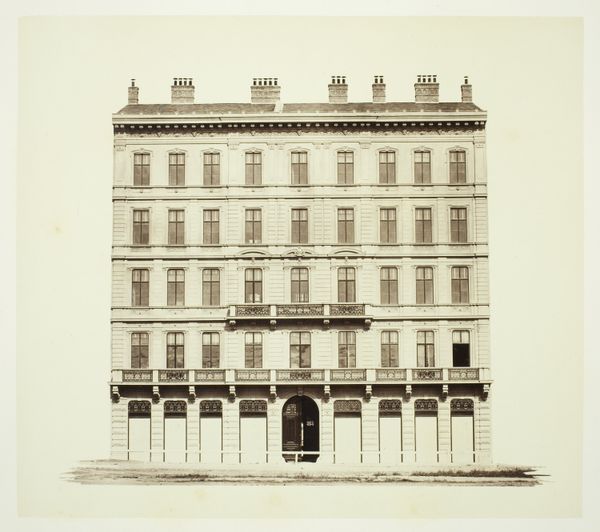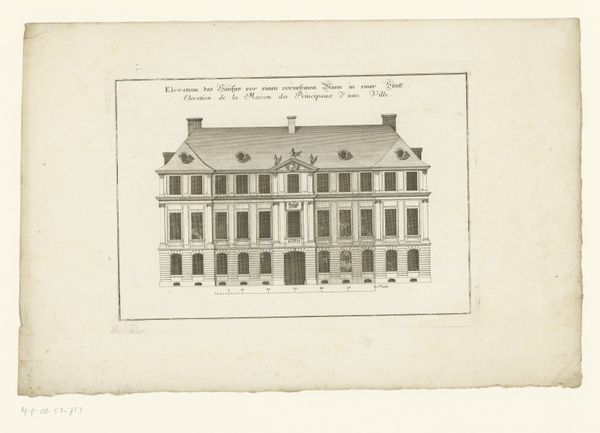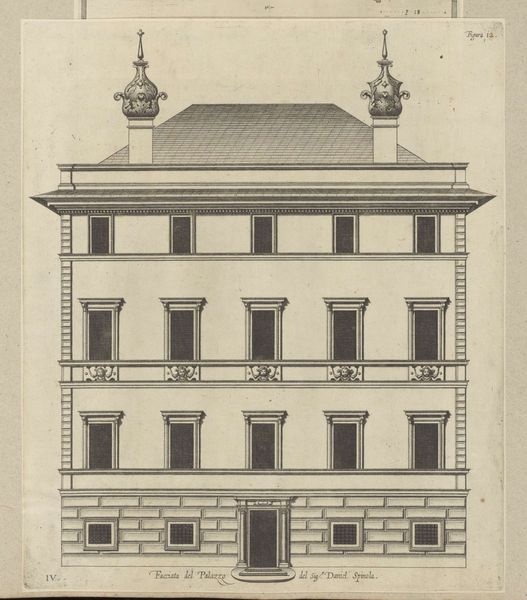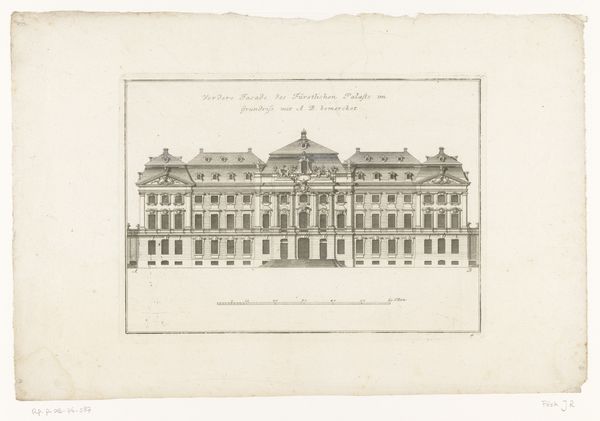
Dimensions: height 165 mm, width 250 mm
Copyright: Rijks Museum: Open Domain
Editor: This print, dating from sometime between 1843 and 1887, is entitled "Post Office in Amsterdam." It is ink on paper. It appears to be a very formal, architectural elevation. What can you tell me about the significance of such a depiction? Curator: It's crucial to consider this cityscape not just as a rendering of a building, but as a representation of power structures and societal values embedded in urban planning and architecture. What statement does such an imposing, Neoclassical structure make about the role of the postal service at that time, its connection to government, and its importance to civic life? Editor: So the rigid lines and ordered facade suggest something more than just a place to send letters? Curator: Exactly. Neoclassical architecture was often used to evoke ideas of order, rationality, and authority, drawing from ancient Greek and Roman models. Think about who had access to postal services at the time, and who was excluded. How might this building have reinforced existing social hierarchies? Editor: That’s a good point. Was this style typically employed for public institutions at that time? Curator: Yes, that is an important connection. It reflects an intention to associate the state with those "classical" values of the period. Buildings like post offices weren’t just functional spaces; they visually communicated a sense of permanence and institutional strength. Who benefited from that symbolic association, and who was marginalized or forgotten in its creation and function? Editor: It makes you think about whose stories get told through these very formal, almost impersonal structures. Curator: Precisely! Reflecting on the relationship between built spaces, social mobility, and cultural power allows us to see urban environments through a richer and far more critical lens. Editor: I’ll definitely keep that in mind from now on! Thanks.
Comments
No comments
Be the first to comment and join the conversation on the ultimate creative platform.


